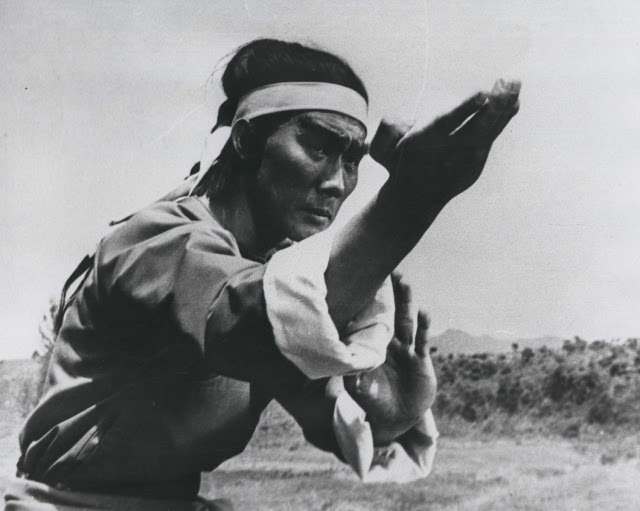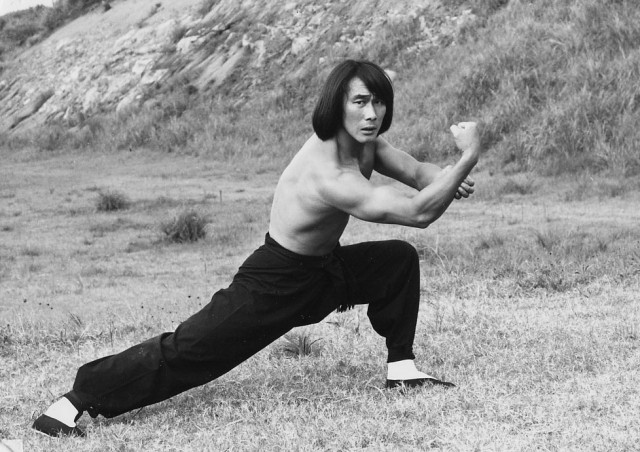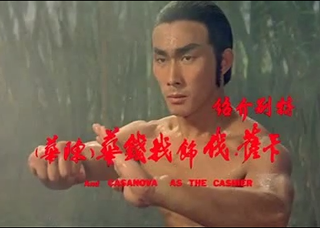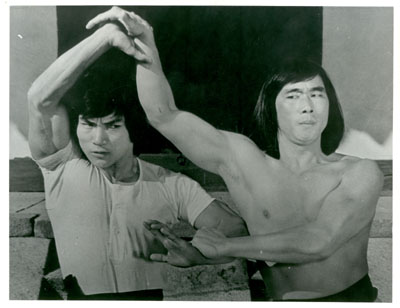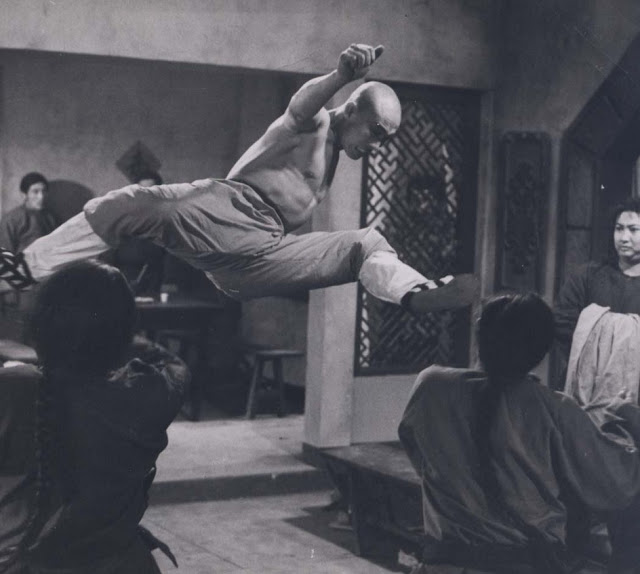Forces of Geek looks back at the career of a true living legend in the worlds of Hong Kong & Korean martial arts cinema, a man known around the world as ‘Casanova Wong’, nicknamed ‘The Human Tornado’ for his kicking ability during his time in the Korean military.
Wong honed his martial skills in the icy rivers of Korea before making the transition from real martial arts to the movies, racking up some impressive credits including such martial arts classics as Warriors Two, Duel to the Death, South Shaolin Vs North Shaolin, The Shaolin Plot, Duel of the Seven Tigers and many more. Wong returned to Korea in the mid 1980’s where he worked on further films both in front and behind the camera until the mid 90’s, and continuing his lifelong study of martial arts.
Forces of Geek’s Big Mike Leeder sat down with Master Wong for the following interview. And the interview begins with Master Wong introducing himself and his beginnings as a martial artist and martial arts actor.
Wong Ho: My name is Wong Ho; my real name is Kim Yong-ho. In Hong Kong I am known as Casanova Wong or Ca-Sa-Va, but I prefer the name Wong Ho. I was born in a city called Kimje in 1952, which is where I was first introduced to Taekwondo when I was in the fourth grade of school. When I was in the eighth grade, I won the silver medal in the national Taekwondo competition and went on to represent my school in various national competitions.
And then I came to Seoul to do my military service in the Korean marines, and continued to compete in taekwondo representing the marines, and took part in one competition which was called the President’s Award, which I also won. My introduction to the movies came when I was practicing my kicks at the Hankook gym, and two people working for Golden Harvest, Mr Wang and director Huang Feng invited me to work on a movie. That movie was called The Shaolin Plot, and this was also the movie where I got to meet my friend and mentor Sammo Hung for the first time, he was the films action choreographer.
I play a warrior monk in the movie, they hired a number of us to play monks and we all shaved our heads, Sammo was playing a renegade monk in the film as well as being in charge of the action. It was a challenge at first, coming to terms with the differences between ‘real’ martial arts and ‘reel’ martial arts, what works for films etc but I think I did ok. Sammo and his team of stuntmen were very demanding but also patient and I think he felt that I had potential, as for the next project, The Iron Fisted Monk which he directed, choreographed and starred in; Sammo invited me to join the movie and gave me quite a showcase for my skills.
Big Mike: Master Wong, if we can touch upon your martial arts background. Some of the styles you’ve studied and your feelings about martial arts in general. We know you come from an obviously Taekwondo background…
With regards to the martial arts, I love them! When I think of martial arts, I don’t just think of Taekwondo, but I also studied and experimented with several other styles including Hapkido & Judo. I had started running when I was very young, I liked to run, and I think that running helped me to build up the skills I needed for the martial arts. I really worked at the basics, at forms, at the correct pose, the snap etc; it helped me to build good technique for fighting and also later on when I made the move to film. Because of the form and power of my kicks and punches, a lot of people said they could feel my power, feel the internal strength of the characters I played.
You know, just because you’ve studied martial arts doesn’t necessarily mean you can be a good martial artist in the movies, making movies is a very hard thing for me as a martial artist. A movie doesn’t work at just the highest level of fighting skill, it also requires the actor to have incredible endurance and conditioning, you might have to throw the same punch or kick, or series of techniques again and again and again while also acting, showing your spirit! Movie martial arts is a style of its own!
A lot of people think that martial arts movies are made using simple camera tricks, but that’s not true. In a real fight you might only throw a punch of kick once or twice, but when filming a fight scene, you might have to do techniques again and again, and adapt a technique you’re used to doing a certain way, differently for a film.
You might have to over extend a kick or punch, make it appear bigger so the camera can see it, it’s not just about speed when you’re filming, you need to make the audience see the power of techniques. You need to learn a diverse range of skills for filmmaking, you can’t just be a Taekwondo man or a boxer, you need to be able to combine styles, to gain the different techniques needed to master a role. I think that’s what some people find hard to adapt to when they first make the move from real fighting to reel fighting, adjusting their techniques, being open to new styles, etc.
Whatever the martial artist has inside, his internal strength for instance, this must be combined with the way he expresses himself externally. That is what you want to see in a martial arts movie, people expressing themselves through the martial skills being demonstrated. The martial arts movements and the performance of the actor are combined to reflect the beauty of the human being. A martial arts movie shows one’s internal strength to the audience, in reality this is one of the most difficult things a martial artist can do, as the warrior must showcase superior attributes, including speed, explosive power, co-ordination, reaction time, their acting and versatility to bring the films spirit to life.
A successful martial arts movie can introduce the world to or showcase a particular martial arts style so well, look at Akido for instance, Steven Seagal showcased it in a way that nobody had been able to previously, and opened the eyes of a lot of people to just how effective a style it could be. Wing Chun for instance was showcased by Sammo Hung in Warriors Two, Prodigal Son, and more recently in the Ip Man movies. A few techniques had to be modified for film, but it showcases the style and the spirit of that martial art, in a way that no public demonstration can do.
Big Mike: Talking of both Wing Chun & Sammo Hung. Sammo really introduced you to the world of Hong Kong martial arts cinema, first as a featured martial artist and then as an actor. How would you describe the relationship between the two of you?
My relationship with Sammo Hung Kam-bo is very special to me.
He not only taught me the technical aspects of martial arts movie making, but he continued to coach me throughout the time we worked together as both a screen fighter and as an actor. He is the one man who really taught me what filmmaking is all about, on so many levels. He has done it all, as an actor, an action director, a stuntman, a director, a producer; he understands all the aspects of filmmaking.
If there is somebody who is responsible for me being able to move forward in the movies, it is Sammo Hung.
The way I see it, the movies we made together were some of the best in my career and Warriors Two was the best movie we made, and one of the best martial arts movies of all time. Director Hung has a very special place in my heart, through the films we collaborated on and working with Sammo, I really learned what filmmaking is. The passion of the movie, the focus of the movie, the strength of this movie all came from Sammo Hung. My memories from the films I did with Sammo hold a very special place in my heart; I admire and respect him so much as a director, a mentor and as a friend.
At any time if Sammo needed me for a project, back then and even now, if he calls I will be there for him. I value the relationship I have with Sammo, as a mentor, a director, and a true friend, whatever he asked of me especially back then, I would do it. He helped to make me the person I am today, both in the movies and in everyday life, he taught me so much. I feel the movies we made together are some of the very best work either of us has done, and really showed people what martial arts movies are about, and I hope that we will have the chance to work together on another project.
Now you’d started making films in Korea, and in-roads into Hong Kong cinema, and were then asked to appear in a fight scene that would be seen by so many people around the world, in Asia as part of the Game of Death movie and internationally as part of Game of Death 2/Tower of Death. How did you come to get involved with the project?
The reason that I shot the fight scene with Kim Tai-chung that was used in some prints of Game of Death, and some of Game of Death 2/Tower of Death is because of Mr Hung.
Golden Harvest had decided to complete Bruce Lee’s unfinished movie Game of Death, there was an American director but Sammo was handling the action scenes and co-directing the film. (Certain Chinese language prints of Game of Death, list Sammo as co-director along with Robert Clouse who was given sole credit for the International release.).
There was another Korean martial arts actor, Kim Tai-chung playing the role of Bruce Lee in the movie, and Sammo felt that if he pitted the two of us against each other he could make a very spectacular fight scene, as we had similar fighting styles.
I liked working with Kim Tai-chung, we worked well together, we not only had a similar martial arts background, but we are both Korean, we share a lot of feelings and ideals, so communication was very easy for us. Kim didn’t have a lot of experience at that time, but Sammo is incredibly skilled as a martial arts choreographer, he knows what he can do, and what I can do, and had the confidence that I could perform the complicated actions he wanted to showcase in the fight.
His confidence in me, also raised my confidence in myself, if somebody I respect so much for their abilities and knowledge, believes in me, it helps me to believe in myself. The fight takes place in a greenhouse, and I broke a lot of flowerpots, real flowerpots when we were shooting the fight scene. I suffered a lot of cuts and bruises, but I knew I had to complete the scene even though I was in pain, Sammo believed in me and I didn’t want to let him down. I feel as does Sammo, that scenes which feature skilful techniques, and show that there is a risk to the actors involved, are exciting and really stay in the audience’s memory for a long time.
You can see that there is real power being used, that if we connect with each other it will hurt, those are real hits at times, and real falls. Sammo Hung demands a lot from you as a fighter and as an actor, if you are putting in 90%, he demands you give 120%, and you find yourself wanting to deliver on that, you don’t want to let him down, you find yourself summoning up that extra 30% from somewhere for him. His demands are great, but working for him you learn so much about yourself, and fighting for film etc.
When I compare the work I did for him, with those projects that I did for other directors, there wasn’t as much risk for me as an actor or fighter in their films, but working for Sammo, it would be hard, painful, and sometimes quite risky…but once the filming was finished and you got to see what you’d achieved, it was worth it.
I would see the fights we shot with an audience, and would ask myself ‘How did I do it?” I impressed myself! He made me surprised at my own abilities. That is something very special.
You understood why he pushed you so hard, and just what was possible. I think he is one of the best action directors in the world, and still hasn’t received the praise or attention he is deserves, his body of work as an actor, a fight choreographer, a director, a producer, it’s incredible. A lot of people myself included owe much of our career to him, and I must thank him for giving me the chance to prove myself. Sammo Hung was the man who really taught me what film making was all about.
Maybe it sounds funny but I feel that it was destiny to meet Sammo Hung, and have the chance to work with and learn from him. Meeting new people is very important, you can learn a lot about yourself through the people you meet and the affect these people have upon you. My passion for movies, my focus on movie making, and my true love for movie making, all came from Sammo. My memories of working with him hold a very special place in my heart. As an actor, to have a chance to work with this kind of director is very rare, and very satisfying. If people around the world know me from my films, it’s because of him and the opportunities that he gave me.
The interview with Casanova Wong will be continue in part 2, with Master Wong’s thoughts on his work in Hong Kong and the movies he made, and much more including his thoughts on where Korean martial arts are headed, his passion for Cheonji Muye Do, and much more.
Thanks to my brother in arms Guy Edward Larke for his assistance with this interview. Larke is a Canadian martial arts scholar, whose fascination with the Asian fighting arts led him to travel the world to broaden his mind and experience. Based in Korea since 2000, he holds Black Belts in Taekwondo, Hapkido, Taekkyon, Bon Kuk Kumdo, Korean kickboxing, Karate, Hosin-sul & Cheonji Muye Do.



































































































